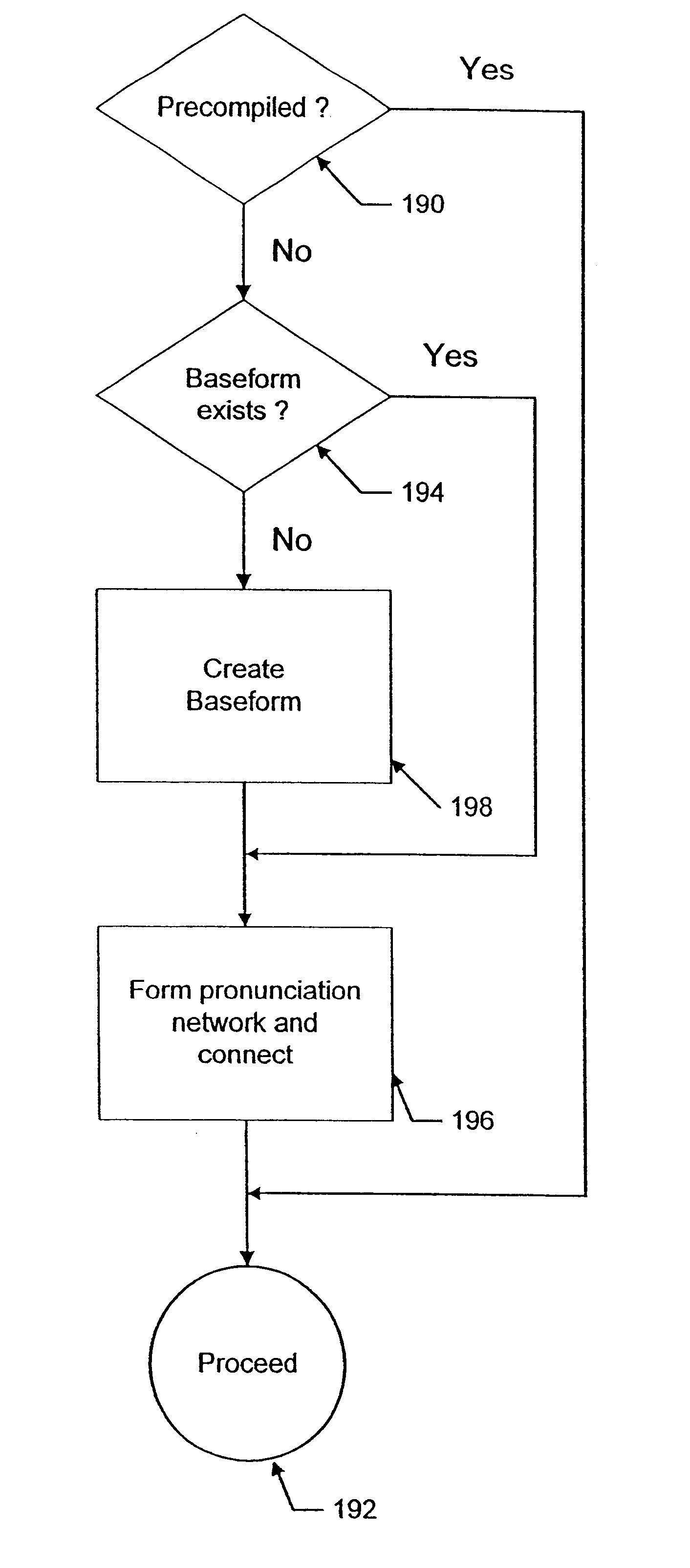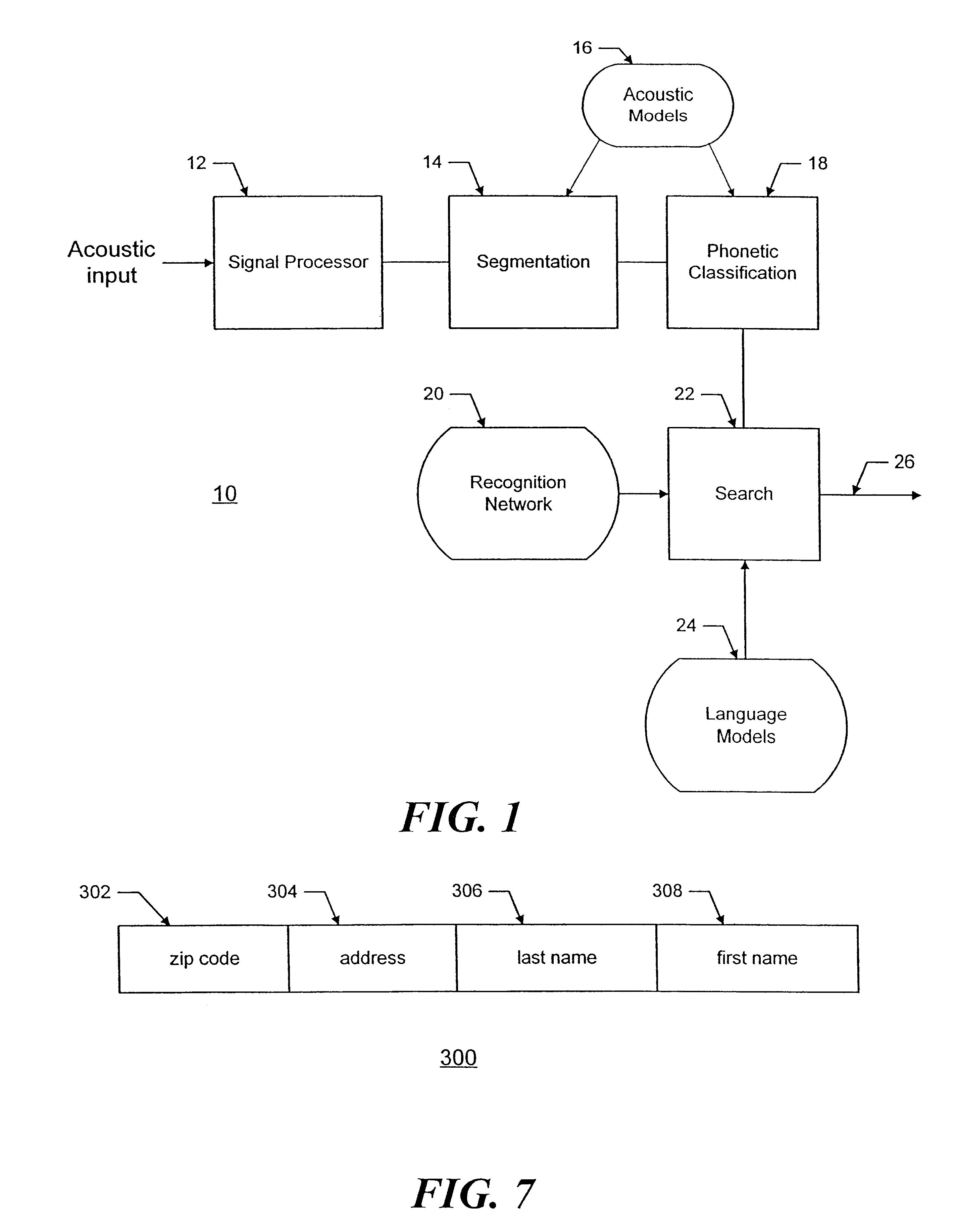Method and apparatus for dynamic adaptation of a large vocabulary speech recognition system and for use of constraints from a database in a large vocabulary speech recognition system
a speech recognition system and large vocabulary technology, applied in the field of large vocabulary speech recognition systems, can solve the problems of increasing difficulty, reducing the ability to dynamically add words to the vocabulary (i.e., during a discourse), and reducing the size of the network to be searched, so as to reduce the size of the network. to be searched and the effect of not slowed down appreciably
- Summary
- Abstract
- Description
- Claims
- Application Information
AI Technical Summary
Benefits of technology
Problems solved by technology
Method used
Image
Examples
Embodiment Construction
In FIG. 1, a speech recognition system 10 comprises a signal processor 12 which converts the acoustic input from a speaker into a form suitable for computer processing, e.g., a sequence of vectors, each representing the frequency spectrum of a portion of the speech. The resultant signals are then analyzed in a segmenter 14 to hypothesize boundaries between the subconstituents (termed "segments") of the input. These boundaries delineate hypothesized "phones" corresponding to phonemes. (A phoneme is a symbol that designates a basic sound of the language, e.g., the sound of the letter "n"; it is enclosed between slashes: / n / . A phone is a symbol representing the pronunciation of a phoneme; it is enclosed between brackets, e.g., [n]. The ARPABET system of notation will be used in the following to represent phones and phonemes). Several begin- and end-times may be hypothesized for each phone, resulting in overlapping hypothesized regions. The segmentation is performed in accordance with ...
PUM
 Login to View More
Login to View More Abstract
Description
Claims
Application Information
 Login to View More
Login to View More - R&D
- Intellectual Property
- Life Sciences
- Materials
- Tech Scout
- Unparalleled Data Quality
- Higher Quality Content
- 60% Fewer Hallucinations
Browse by: Latest US Patents, China's latest patents, Technical Efficacy Thesaurus, Application Domain, Technology Topic, Popular Technical Reports.
© 2025 PatSnap. All rights reserved.Legal|Privacy policy|Modern Slavery Act Transparency Statement|Sitemap|About US| Contact US: help@patsnap.com



